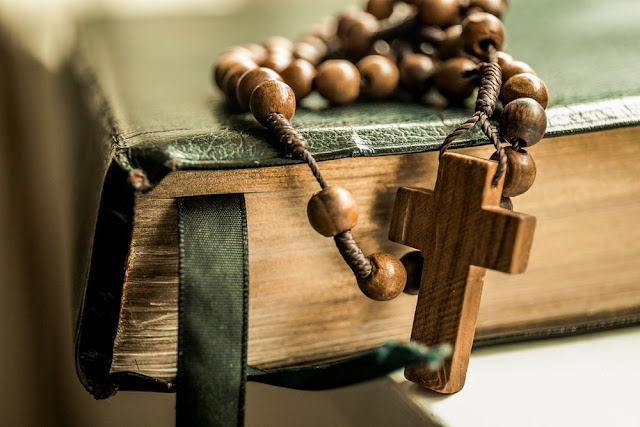The Story behind Catholic Rosary Beads
The prayer of the Holy Rosary arises approximately in the year 800 when the psaltery of the laity was created. At that time the monks prayed the 150 psalms, but as most of the laity could not read, they were taught to pray 150 Our Fathers. Then three other psalteries were formed that included 150 Birds of Mary, 150 praises in honor of Jesus and 150 praises in honor of Mary.
In the year 1365 the four psalters were combined. The 150 Marie Birds were divided into 15 tens and an Our Father was placed at the beginning of each one of them. In 1500 it was established, for every ten, the meditation of a fact of the life of Jesus or Mary, and thus the Rosary of fifteen mysteries emerged. In 2002, Pope St. John Paul II introduced the luminous mysteries. With this, there are currently 20 mysteries in the Holy Rosary.
The word Rosario means "Crown of Roses." The Virgin Mary has revealed to many people that every time they pray a Hail Mary they give her a rose and for each full Rosary they give her a crown of roses. Just as the rose is the queen of flowers, the Rosary is the rose of all devotions and, therefore, is the most important.
The Holy Rosary is considered the perfect prayer because the main mysteries or facts of the life, death and glory of Jesus Christ and his Blessed Mother are meditated. These are distributed in the joyful, painful, glorious and luminous mysteries.
The Church received the Rosary in its current form in the year 1214 in a miraculous way: the Virgin appeared to Santo Domingo de Guzmán and handed it over as a powerful weapon for the conversion of heretics and other sinners of those times. In addition, he entrusted him with the task of spreading his devotion.
This gained strength in Christendom after the Battle of Lepanto in 1571. Muslims controlled the Mediterranean Sea and prepared the invasion of Christian Europe. The Catholic kings of Europe were divided and seemed unaware of the imminent threat. On September 17, 1569, the Pope asked that the Holy Rosary be prayed.
In gratitude to the Virgin Mary, Pope Pius V instituted the feast of Our Lady of Victories and added to the Litanies of the Blessed Virgin the title of "Help of Christians." Later, Pope Gregory III changed the name of the party to that of Our Lady of the Rosary, which is currently celebrated on October 7.


Comments
Post a Comment